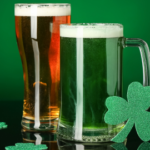A dry wine is one that isn’t sweet because there’s no residual sugar left from the wine-making process. The yeast eats the sugar that comes from the grapes. If winemakers are looking for sweetness – like for a Riesling – they halt the fermentation process halfway. However, if the winemakers leave the wine to a natural finish, the product is a dry wine.
This month, we’d like to focus on the various dry wine varietals available in the US, including a brief rundown of the common flavor profiles, characteristics, and regions most popular here at Payless.
Dry Wine January
If you don’t know a dry white from a Riesling, check out our list of dry wine recommendations for this month.
- Napa Valley Cabernet Sauvignon. From one of America’s best-known wine regions comes a variety of dry red wines, including cabernet sauvignon. Cabs from this region tend to be low in acidity and aged in dry oak barrels, imparting a more subtle hint of oak than their white wine counterparts. Napa Cabs are typically very dark and dense, with notes of dark fruits such as currants and black cherry.
- Washington State Merlot. While not as well-known as Napa or Sonoma, southern Washington has some of the best merlots you can find this side of Bordeaux. Merlot is sweeter than other dry reds like cabernet, due to its lower tannin levels, making it a great wine to ease into if you’re not used to drinking red or dry wines. For this reason, many wineries use merlot primarily in red blends.
- Top Shelf Burgundy Pinot Noir. Much is made of Sonoma Pinot Noir, but if you’re looking for something truly top shelf, find a Burgundy Pinot. Burgundian Pinot strays from the fruitier flavors favored by the American version and substitutes more earthy undertones. Typically, Burgundian reds are aged to a lesser extent than Americans and are considered more traditional.
- Italian Pinot Grigio. Dry, zesty, and refreshing all in one glass, Pinot Grigio is Italy’s premiere white wine. Pinot Grigio is much more acidic than any of the dry wines found on this list so far, but its apple, citrus, and honeysuckle notes make it accessible to wine enthusiasts of all kinds. Fun fact: The Pinot Gris grapes used to make Pinot Grigio are thought to be mutated from the original Pinot Noir Grapes.
- Sonoma Oaked Chardonnay. The California version of the French classic is one of the most popular wines in the world. Because it’s one of the few whites commonly aged in oak barrels, Chardonnay has a unique buttery, vanilla taste in addition to its apple and melon fruit flavors. If you’re not into the buttery oakiness, try an unoaked version from the same region.
Whatever your wine preferences, we challenge you to try something new this month. This list of dry red and white wines is a great place to start and sure to please the pickiest pallet. Alternatively, ask one of our team for a recommendation more individual to your unique tastes.













